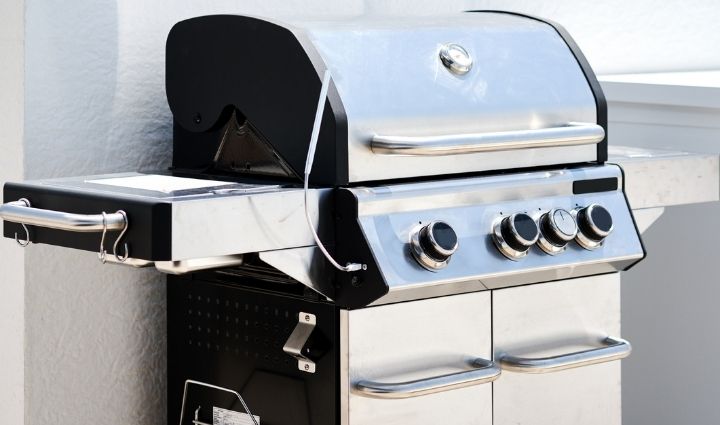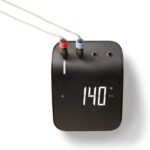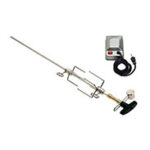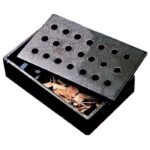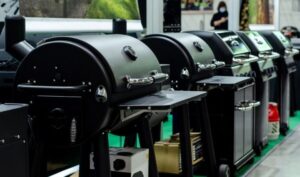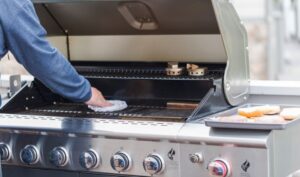This is Part 1 of GrillSpot’s Ultimate Gas Grill Buying Guide, where we’ll cover everything you need to know about how to buy a gas grill, from what factors you need to consider to detailed guides dedicated to everything from budget to grill size to BTUs.
Purchasing a gas grill can be a daunting prospect, especially if you don’t know exactly what to look for.
With so many different gas grills on the market, each with its own pros and cons, there are a lot of decisions to make regarding:
- Budget
- Type of grill (natural gas vs. propane)
- Grill size
- Grill features and add-ons
- BTUs
- Durability of materials
With these factors in mind, here’s our expert advice for how to choose a gas grill:
Budget
The price for gas grills can range from as little as $100 to more than $6,000. Ideally, you should base your budget on how seriously you plan to grill.
The less often you grill, the fewer people you grill for, and the fewer features you need, the cheaper your grill can be. It is important to note that if you are looking for an inexpensive, entry-level grill (think under $300), the place to cut back and save money is on additional features—grills that are low-cost but still have lots of bells and whistles tend to have lower-quality parts.
For more intensive grilling, like year-round daily use, frequent BBQs with extended family and friends, and neighborhood cookouts, you can expect to spend more money in order to get a more durable grill with useful additional features and larger cooking space. It’s okay to opt out of the more specialized gadgets if your budget is tight, but if you invest money in a good quality grill and take proper care of it, it will pay you back with years of great grilling.
Type of Gas Grill
While you may be familiar with the charcoal grill vs gas grill debate, you may not be as well versed with the different types of gas grills and their pros and cons. Here are the three common types of gas grills to consider:
- Propane gas grills: Propane grills run on a refillable tank that can be replenished at your local propane supplier. These grills are typically freestanding or portable grills on wheels that can be moved around your yard. Ideal for those who don’t want to have their grill in a fixed location, and those without a natural gas hookup.
What to look for in a propane grill: Check whether or not a propane tank is included when purchasing your propane grill. If not, buying one separately can add another $20 to $30 to your total cost.
- Natural gas grills: Natural gas grills don’t require gas tanks because they hook up directly to the natural gas line from your house. If you already have natural gas in your home, running these grills will be less expensive than propane in the long-term, and you don’t have to worry about refilling propane tanks or running out of gas during the middle of a cookout.
GRILL SPOT TIP: Natural gas grills have a lot of benefits, but if you don’t have a pre-existing natural gas line, you may be better off opting for propane. The installation of a natural gas line can be costly and disruptive, especially if your home is situated further away from the distribution hookup.
- Convertible gas grills: Many manufacturers, instead of producing both a propane and natural gas version of their grills, now offer what is referred to as a convertible gas grill. Out-of-the-box, these grills are set up to work with propane. However, with the purchase of a do-it-yourself natural gas conversion kit, the grill can be converted to use natural gas instead.
Learn more about different types of gas grills.
Grill Size
Gas grill sizes are usually classified by the number of burners the grill has. The number of burners does not always indicate the relative amount of cooking space the grill offers, but knowing how many burners a grill has is still a useful guideline. Most models have between two and six burners. In most cases, fewer burners means a smaller cooking surface, but it is not uncommon to find 4 and 5 burner models with similarly sized cooking areas.
Consumer Reports created a helpful size classification system determined by how many burger patties a barbecue can fit and divided grills into three categories:
- Small grills: Holds 18 or fewer burger patties. These grills are well-suited to small cookouts and are ideal if you don’t have a lot of space to store your grill. They are also typically more portable thanks to their smaller size, and they are typically cheaper if your budget is low.
- Mid-sized grills: Holds between 18 to 28 burger patties. This is the most popular grill size and often is the ideal size and price range for most grillers. The price and included features run the gamut from mid-range and few features to high-end and completely decked out.
- Large grills: Holds 28 or more burger patties. These grills are usually for serious grillers only, as they are quite big—offering the largest cooking area and a higher number of burners—and often the most expensive.
Grill Features
The features you need will largely depend on your style of grilling and your budget. Grill features include things like:
- Smart grilling components
- Side burners
- Rotisserie burners
- Warming ovens
- Motorized rotisserie for grilling roasts on a rotating spit
- Infrared ceramic burners for searing meat
- Smoking trays for flavoring meats
Features always add to the cost of your grill. Only select grills with features you know you’re going to use, and remember that some of these items can be purchased as add-ons later if your grilling requirements change.
Shop for grilling tools:
BTUs
British Thermal Units (BTUs) are a measurement of how much heat a burner (or burners) generates while lit, but you shouldn’t buy a grill solely based on a high BTU rating. Most current gas grills are capable of 25,000 to 60,000 BTUs, but a lower number doesn’t necessarily mean the grill can’t produce high cooking temperatures. You also have to consider the grill’s size, shape, and materials—a small grill that holds and distributes heat well doesn’t require as many BTUs to get up to temperature.
How many BTUs do I need for my gas grill? The easiest way to determine how many BTUs you need is to divide the number of BTUs by the total cooking surface in square inches. You are looking for approximately 110 BTUs per square inch.
Durability of Materials
The durability and longevity of a gas grill comes down to a few things: the quality of its parts and materials, and how well you take care of it. While selecting a well-made grill with quality materials is one way to ensure years of happy grilling, keep in mind that it still needs to be covered to protect it from the elements and regularly cleaned and maintained. Even lower-end grills can endure many seasons if you take proper care of them.
Keep your grill in good condition with our grill maintenance guides.
Learn more about how long a gas grill should last.
What BBQ Should I Buy?
You should buy a BBQ that meets your grilling needs, which means a gas grill that:
- Fits into your budget
- Is large enough to accommodate the number of people you usually cook for
- Has features you will actually use
- Is easy to use
- Heats up quickly
- Has easy to control temperature
- Is durable enough for your typical usage

